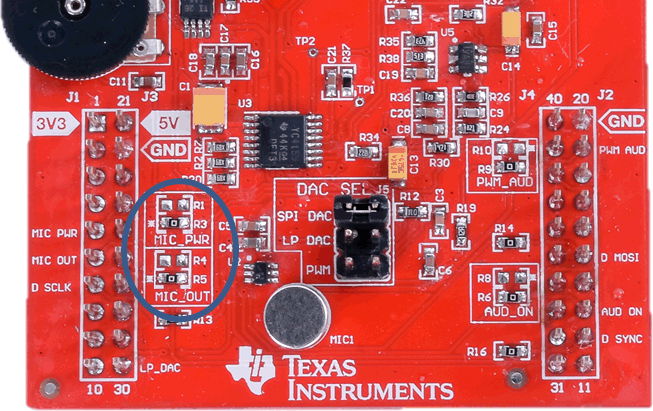SLAU678C March 2016 – November 2022
- Abstract
- Trademarks
- 1Getting Started
- 2Hardware
- 3Software Examples
- 4Resources
- 5FAQ
- 6Schematics
- 7Revision History
3.4.2 Operation
This demo is a TI reference design that highlights the signal processing capabilities and performance of the MSP430FR5994 MCU and its integrated low-energy accelerator (LEA). This example also uses the 430BOOST-SHARP96 or the BOOSTXL-SHARP128 BoosterPack plug-in modules to display the filtered output of the audio signal and act as a user interface. To use this code example user's must configure the Audio BoosterPack plug-in module to use its alternate microphone power and output pins by moving the 0-ohm resistor on R1 to R3 and R4 to R5 as shown in Figure 3-6. For more information on this example, visit the reference design page.
 Figure 3-6 Alternate Microphone Configuration
Figure 3-6 Alternate Microphone Configuration